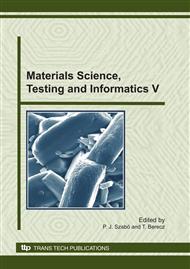p.313
p.319
p.325
p.331
p.337
p.343
p.349
p.355
p.361
Trackability and Flexibility of Coronary Stents
Abstract:
Coronary stents are the most important materials in our days cardiology. Flexibility and trackability are two basic features of stents. In this paper seven different balloon-expandable coronary stent systems were investigated mechanically in order to compare their suitability. The coronary stent systems were assessed by measurements of stent flexibility as well as by comparison of forces during simulated stenting in a self-investigated coronary vessel model. The stents were cut by laser from a single tube of 316L stainless steel or L-605 (CoCr) cobalt chronium alloy. The one- and four point bending tests were carried out to evaluate stent flexibility E∙I (Nmm2), under displacement control in crimped and expanded configurations. The flexibility of stents would rather dependent on the design than raw material. In generally the more flexible stent needs lower tracking force during the implantation. The L-605 row material stents need lower track force to pass through in the vessel model as the 316L row materials stents. In the curve of the vessel model the sort and long stents passed through in different ways. The long stents nestled to the vessel wall at the outer arc and bent, while the short stents did not bend in the curve, only the delivery systems bent.
Info:
Periodical:
Pages:
337-342
Citation:
Online since:
September 2010
Authors:
Keywords:
Price:
Сopyright:
© 2010 Trans Tech Publications Ltd. All Rights Reserved
Share:
Citation:


